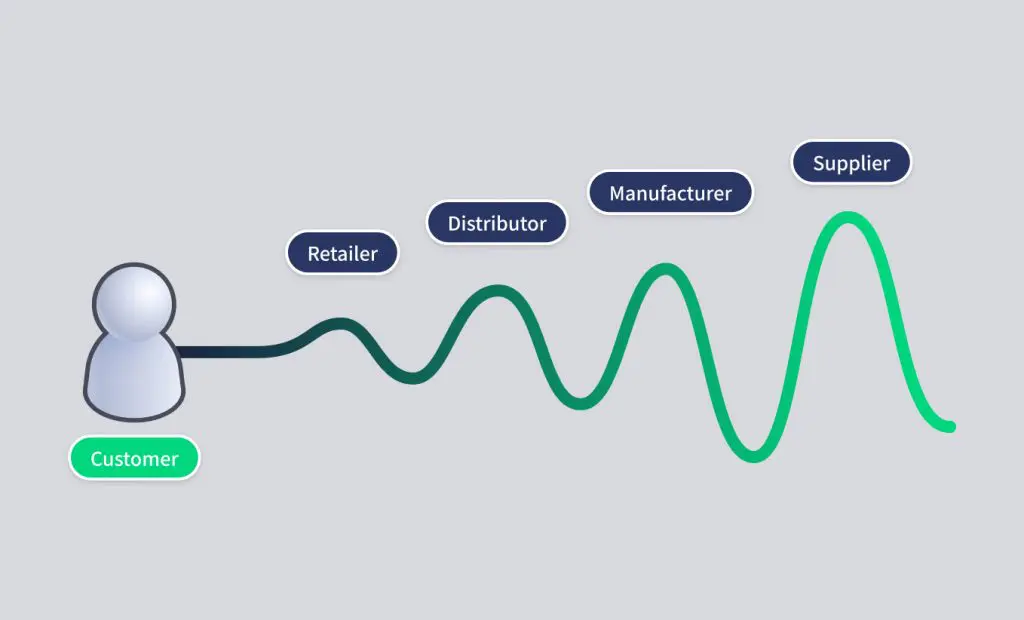In the complex world of supply chain management, inventory accuracy stands out as the absolute cornerstone of efficiency. Put simply, it’s the degree to which your recorded inventory data—what your computer system thinks you have—matches your actual, physical inventory on the shelves. It sounds basic, but even small discrepancies can cascade into significant problems, creating a domino effect of stockouts, overstocking, and very real financial loss. This guide will provide a complete framework for understanding, measuring, and systematically improving your inventory accuracy for good.
What is Inventory Accuracy and Why Is It So Critical?
Inventory accuracy is a measure, usually expressed as a percentage, of how well your inventory records align with reality. A score of 99% means that for every 100 items your system says you have, 99 are actually there. A high percentage means your records are a reliable reflection of what’s in your warehouse. A low one means you’re essentially flying blind.
And why does this matter so much? Because the costs of inaccuracy are steep, and the benefits of getting it right are immense.
For starters, it has a direct impact on customer satisfaction. High accuracy prevents you from promising products you don’t actually have, which is one of the fastest ways to frustrate a customer. It also helps you avoid unexpected stockouts on your most popular items.
It also dramatically reduces your operational costs. When you trust your numbers, you minimize the carrying costs that come from overstocking “just in case” and avoid paying for expensive, last-minute rush orders to cover unforeseen shortages. Your financial reporting becomes far more accurate, too. Your balance sheet reflects the true value of your assets, which keeps your accounting clean and your CFO sleeping better at night. Ultimately, reliable data leads to better decision-making across the board. Your forecasting, purchasing, and strategic planning are all built on a foundation of fact, not guesswork. And as a bonus, it helps you spot and prevent shrinkage by quickly flagging discrepancies that could point to theft, damage, or even supplier fraud.
The Common Root Causes of Inventory Inaccuracy
Inventory discrepancies don’t just appear out of thin air. They are almost always symptoms of deeper, underlying issues in your processes. If you can diagnose the root cause, you’re halfway to solving the problem.
The most common culprit is plain old human error. This can be anything from a simple data entry mistake during receiving, to miscounting items during a pick, to an employee shoving a box onto a random shelf during a busy receiving rush. You know, it’s funny how a small shortcut taken on a hectic Tuesday can cause accounting headaches for weeks.
Then there are process gaps. This happens when you have inefficient or, worse, undocumented procedures. If your teams for receiving, putaway, picking, and shipping all have their own “way” of doing things, you’re creating countless opportunities for error. Without a standardized playbook, consistency is impossible.
You might also be dealing with system and data issues. Using outdated software that can’t keep up, or having a point-of-sale system that doesn’t talk to your inventory management system, creates data silos and blind spots. Every single inventory movement, from a customer return to an internal transfer, needs to be recorded. If it’s not, your numbers will drift further from reality every day.
Finally, there’s inventory shrinkage. This is the formal term for the loss of inventory due to theft (both internal and external), damage, or spoilage that goes unrecorded until it’s discovered during a count.
How to Measure and Benchmark Your Inventory Accuracy
You can’t fix what you don’t measure. Establishing a clear metric for inventory accuracy is the essential first step toward improving it. The standard formula is straightforward:
Inventory Accuracy % = (Total Items Counted / Total Items on Record) x 100
So, if you count 985 widgets but your system says you should have 1,000, your accuracy is 98.5%. While 100% is the ultimate goal, it’s notoriously difficult to maintain. World-class operations typically achieve and sustain 98-99% accuracy. To gather the data for this formula, businesses generally use one of two methods.
Cycle Counting
I have to admit, I’m a big fan of this approach. Cycle counting is a continuous auditing process where you count small, targeted subsets of your inventory on a regular basis, often daily or weekly. Instead of a massive, disruptive event, it becomes part of your routine. The advantages are huge: it’s far less disruptive to your daily operations, it steadily improves your overall accuracy over time, and it helps you identify the root causes of errors much faster. If you count a specific aisle every Monday and find the same type of error each time, you know exactly where to look for a process breakdown.
Full Physical Inventory Counts
This is the traditional “all-hands-on-deck” method. You halt operations, often for a day or even a weekend, and your entire team counts every single item in the warehouse. The main advantage is that it gives you a complete, accurate snapshot of your entire inventory at a single point in time. However, the downsides are significant. It’s incredibly disruptive, costly in terms of lost productivity and overtime pay, and, frankly, its perfect accuracy only lasts for a moment. As soon as you open for business again, the first sale or return introduces a new opportunity for error.
Improving and Maintaining Inventory Accuracy
Achieving and maintaining high inventory accuracy isn’t about a single solution; it’s about a multi-pronged approach that brings together your people, your processes, and your technology.
1. Optimize Processes and Warehouse Organization
This is the foundational work. Before you throw any fancy tech at the problem, get your house in order. Create and enforce clear Standard Operating Procedures (SOPs) for every single inventory touchpoint, from the moment a truck arrives to the moment a package leaves. A well-organized warehouse is also a huge factor. When you have a logical layout with clear, easy-to-read labels for every bin, shelf, and product, you inherently reduce the chance of items being misplaced. It’s the old wisdom of “a place for everything, and everything in its place.”
2. Implement the Right Technology
Technology acts as a powerful force multiplier for accuracy. A modern Inventory Management System (IMS) or a more robust Warehouse Management System (WMS) should serve as your single source of truth for all inventory data. The real game-changer, though, is implementing barcode or RFID scanners. These tools dramatically reduce human error by taking the guesswork and “fat-fingering” out of data entry. Scanning a barcode is infinitely more accurate and faster than manually typing in a long SKU number, enabling real-time, error-free tracking of every item’s movement.
3. Empower and Train Your Team
Even the best technology in the world will fail if you don’t have a well-trained team to run it. Your training programs should go beyond just teaching the “how” of performing a task; they need to explain the “why.” When your staff understands how crucial their role is in maintaining accuracy, they become more engaged and diligent. It’s also vital to foster a culture of accountability where people feel comfortable reporting discrepancies without fear of blame. You want your team to be your eyes and ears on the floor, actively helping you spot and fix problems as they arise.
Making Inventory Accuracy a Core Business Strategy
In the end, high inventory accuracy is not an accident. It is the deliberate result of combining robust processes, the right technology, and a well-trained, accountable team. It shouldn’t be seen as a tedious chore for the warehouse, but as a core business strategy that directly impacts the bottom line. Inventory accuracy and forecast accuracy go hand in hand when building a responsive supply chain, enabling smarter decisions and better outcomes at every level of the business.






